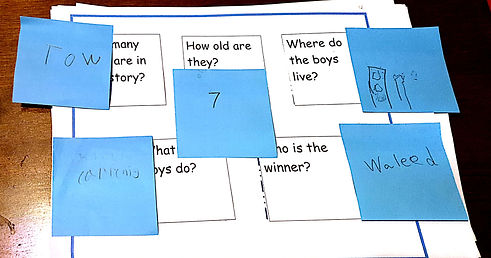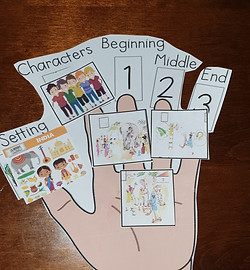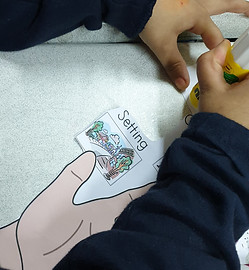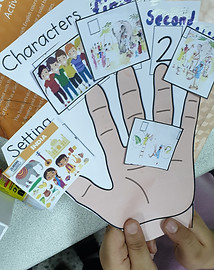Implementing Learning
Page overview:
This page outlines a range of teaching strategies that I used to execute my lessons.
Definition
While implementing learning in the classroom, it is crucial to incorporate strategies that are aimed to include different learners, whether it's based on their readiness, or learning style. Furthermore, using strategies that veer away from a traditional approach helps keep learners engaged (Zeiger, 2018).
Professional Development Plan (PDP) Goals
Transition sticks

The transition sticks were used for three sections of the lesson as a part of my PDP. The first is to “Look and listen” which is used when modelling occurs. The second is to notify students that the activity is about to end. The third is to let students know they should start cleaning up.
Rationale
Explicit transitions from one activity to another affect students' engagement levels during the lesson. Moreover, students are more likely to be responsive when they know what to expect during the lesson, which is why routines are important (Codding & Smyth, 2008).
Challenging Activities

Students had to read questions about the story, and write down one-word answers.

This activity required students to read the writing on the craft sticks, and sort which sticks had the size, color, and name to create a descriptive phrase.
Rationale
Activities were differentiated based on students' readiness, and one of my PDP goals was to focus on stretching the high achievers. Therefore, I planned for activities that are of a higher challenge. According to Costley (2012), "Challenging tasks promote cognitive growth" (Costley, 2012).
Mentoring College Teacher's (MCT) Feedback

During the lessons, students were seen to be engaged and engrossed in discussions.
Gradual Release of Responsibility Model (GRRM)
Lesson 1: Story Elements
Modelling
Speaking

First, I taught students about the elements and modelled how the activity will take place.

Second, before starting the activity, students worked in pairs to discuss the elements of the story.
Solving

Presenting

Third, students depended on themselves to stick the correct pictures under the titles.
Finally, the pairs presnted their work.
Rationale
The Gradual Release of Responsibility Model (GRRM) is an approach to introducing new content where responsibility is slowly shifted from the teacher to the students (Fisher, 2008). The steps that I followed during my lessons began with solely my instructions, moving on to students participating in reinforcing the information, then independently working without the teacher's help. Finally, they either speak about or present their final product. My teaching philosophy advocates the use of a gradual release as an approach to teaching, due to it's promotion of students' independence.
Learning through Play
The long e Card Game

When I taught the students about the long e, I created a card game activity where the children worked in pairs to draw cards from a pile and match them with their own cards.
Rationale
Often, older children, like those in the primary grades, are given tasks that focus on academic achievement. However, play is an essential part of learning for all ages, and not only younger children. Play-based approaches to learning tend to motivate students to reach the learning outcomes (Unicef, 2018). It's necessary to give learners a change of routine from the usual text-book based learning.
References:
Costley, K. C. (2012, February). An overview of the life, central concepts,
including classroom applications of Lev Vygotsky (Report No. ED529565).
Codding, R. S., & Smyth, C. A. (2008). Using performance feedback to decrease classroom transition time and examine collateral effects on academic engagement. Journal of Educational and Psychological Consultation, 18(4), 324-345. https://doi.org/10.1080/10474410802463312
Fisher, D. (2008). Effective use of the Gradual Release of Responsibility Model. Retrieved March 23, 2020, from https://www.macmillanmh.com/connectED/national/treasures_econsultant/assets/pdf/douglas_fisher_monograph.pdf
Unicef. (2018). Learning through play [PDF]. Retrieved from
https://www.unicef.org/sites/default/files/2018-12/
UNICEF-Lego-Foundation-Learning-through-Play.pdf
Zeiger, S. (2018, June 28). List of core competencies for educators. Retrieved
April 23, 2020, from https://work.chron.com/
list-core-competencies-educators-8916.html